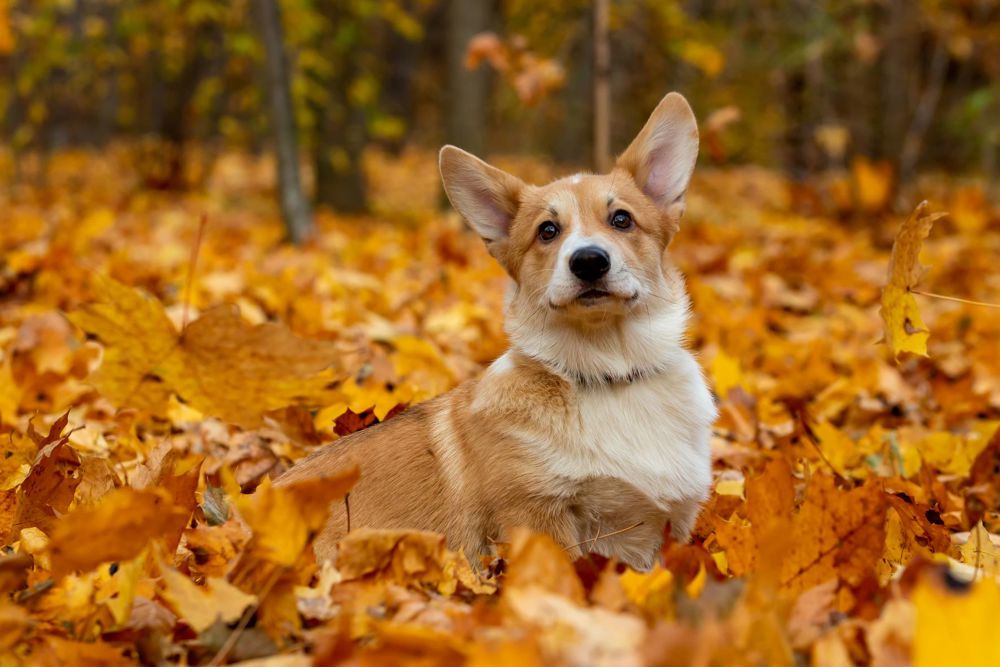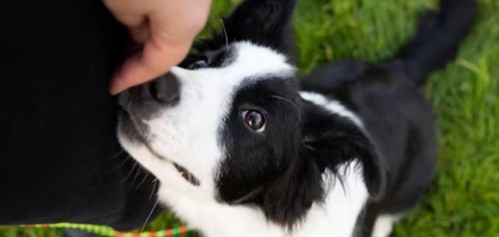
Autumn is the season for muddy woodland walks, kicking through piles of crunchy golden leaves and wrapping yourself up, ready to battle the wet and windy weather. Although autumnal walks with your dog can be beautiful, it’s important to be aware of the seasonal dangers that could be harmful to them.
Acorns
Acorns contain a type of toxin called tannic acid that can make your dog sick or give them a stomach upset. In larger amounts, or if eaten regularly, tannins can also cause kidney and liver failure. Green acorns contain the highest amounts of tannins and are more poisonous than brown ones. As well as being poisonous, acorns can also block your dog’s stomach, causing further complications.
Find out more about the dangers of acorns.
Find out more about the dangers of acorns.
The best lifetime dog insurance
Protect your dog with the UK's Number 1 pet insurer, with up to £25,000 cover for vet fees.
Conkers
These hard shiny seeds contain a toxin called aesculin, which can make your dog sick or give them an upset stomach. Conkers have a bitter taste that might put some dogs off eating a lot of them. When eaten in larger amounts, aesculin can cause more serious effects, and in rare cases can even be deadly. Conkers are large and hard and may cause your dog to choke on them, or could block their stomach and gut.
Find out more about conkers.
Find out more about conkers.
Toadstools (also known as wild mushrooms or fungi)
When most people think of toadstools, they usually conjure up the image of fly agaric, a bright red shiny fungus with white spots, but toadstools come in all sorts of shapes, colours and sizes. Although some types of wild fungi are edible, it’s often difficult to distinguish these from the poisonous types. If your dog eats an unknown fungus it could make them unwell. Some types may only cause a mild stomach upset, while other can be deadly. Some can cause toxic effects in minutes, while other may take days or, in rare instances, weeks to come on.
If your dog does eat an unknown wild mushroom:
If your dog does eat an unknown wild mushroom:
- Take them to the vets immediately. Make sure to call ahead first to let them know you're on your way
- If possible, bring along a photo, or ideally a sample of the fungi
- If you do have a sample, put it in a paper bag, or carefully wrap it in paper. Do not wrap the fungus in plastic, or a plastic bag, as this can cause the sample to breakdown more quickly, making it more difficult to identify
- Take note of the area where the fungi was found e.g. was it growing in grass or on a tree stump etc. Knowing where it grew can help experts identify what type of fungi your dog has eaten should they become ill
Fireworks
80 per cent of owners notice a change in their dogs behaviour during fireworks season and nearly half (48 per cent) say that their dogs are scared by them, so celebrations like Bonfire Night or Diwali can be stressful for many dogs. Dogs have an incredible sense of hearing, so the bangs and explosions that we think are loud may be deafening to our dogs. Not knowing what’s going on, or not knowing when to expect the next explosion, can make fireworks particularly petrifying to our four-legged friends. To help keep your dogs relaxed you can drown out the noise of the fireworks with music or TV, or you can give them lots of positive attention to help distract them.
Find out more about how to prepare your dog for fireworks.
Find out more about how to prepare your dog for fireworks.
Spent fireworks and sparklers
Old or spent fireworks contain dangerous chemicals that can be harmful to your dog. The chemicals used in fireworks can cause a range of effects that often start with sickness, an upset stomach, tummy pain or can cause their poo to have blood in it. More serious effects can include fitting, breathing problems and problems with their kidneys or liver. If there have been fireworks in your area, always check your garden for spent parts of fireworks on the morning after.
Halloween
Halloween can be a stressful time of year for us and our dogs. Trick or treaters, strange costumes and spooky decorations can all be distressing to your dog, while plenty of chocolates and sweets around the house can be dangerous to them.
Find out more about the dangers of Halloween.
Find out more about the dangers of Halloween.
Glow sticks and luminous bracelets
The liquid inside these glowing items is an irritant and, if eaten, can cause your dog to dribble or froth at the mouth, give them a stomach ache or could make them sick. Strangely enough, these items are particularly attractive to cats, so make sure to keep them away from any feline friends as well.
Dark nights
As the evenings become darker earlier, it’s a good idea to help make you and your dog more visible. Road traffic accidents are more common in darker months, so remember to walk your dog wearing reflective clothing, or give your them bright reflective collars or light up leads. Also, check that your dog’s microchip details are up to date and that they’re wearing ID tags in case they get lost after dark.
Alabama rot
Alabama rot is a rare but potentially life-threatening disease that affects dogs. We don’t know what causes Alabama rot, but it’s believed to be related to walking in muddy conditions. Alabama rot causes problems with blood vessels in the skin and kidneys, and often first appears as unexplained marks, sores or ulcers, usually on their legs or paws. To prevent your dog from getting ill, experts recommend that you either keep dogs away from muddy areas (easier said than done) or wash and dry them thoroughly after muddy or wet walks.
Find out more about Alabama rot.
Find out more about Alabama rot.
Fallen fruits
As the temperature begins to cool in autumn, many trees start to drop their fruits. Some seeds, pips and fruit stones (apples, cherries, plums etc.) contain toxins that can make your dog ill.
These fruits can also make your dog unwell if they’re eaten when mouldy or after they’ve begun to ferment.
These fruits can also make your dog unwell if they’re eaten when mouldy or after they’ve begun to ferment.
Fleas
Dogs can catch fleas when they come in to contact with other infested animals, or when the fleas jump on to your dog when out for a walk. It’s easy to prevent fleas and many flea products are safe, easy to administer and effective at stopping them from bothering your pet. If you need advice on the best flea treatments or preventatives to use then speak to your vet for advice.
Find out more about fleas.
Find out more about fleas.
Rat and mouse poison
In autumn and winter, mice and rats begin to invade people’s houses looking for warmer places to live. Mouse and rat poisons are designed to be attractive to rodents, but they often smell and taste good to your dogs too. If you use any of these poisons, make sure they are put in places where your dog can’t reach them. Always contact your vet immediately if you are concerned that they may have eaten any poisons.
Find out more about rat and mouse poison dangers in dogs.
Find out more about rat and mouse poison dangers in dogs.
Ticks
These blood sucking mites are more commonly found during the spring and autumn, but can feed from dogs at any time of the year. Ticks can pick up diseases from one host and pass it onto another (including us), sometimes causing long-term illnesses. After walks in the park or countryside, always check your dog for any strange lumps or bumps that could be a tick, particularly around their head, groin, armpits and feet.
Find out more about ticks.
Find out more about ticks.
Planting spring bulbs
If you’re planting spring flowering bulbs in the autumn, remember to keep a close eye on your dog while you’re busy digging. Daffodil, tulip and spring crocus bulbs can all be toxic and can make your dog unwell. Plant bulbs usually contain more concentrated amounts of toxins than other parts of the plant, so may cause more serious effects. What these toxins do to your dog can vary depending on what type of bulb has been eaten, but most of them initially cause sickness or an upset stomach.
Find out more about toxic garden plants.
Find out more about toxic garden plants.
Think your dog may be affected?
If you're worried about your dog's health, always contact your vet immediately!
We are not a veterinary organisation and so we can't give veterinary advice, but if you're worried about any of the issues raised in this article, please contact your local vet practice for further information
Find a vet near you
If you're looking for a vet practice near you, why not visit the Royal College of Veterinary Surgeons' Find a vet page.


